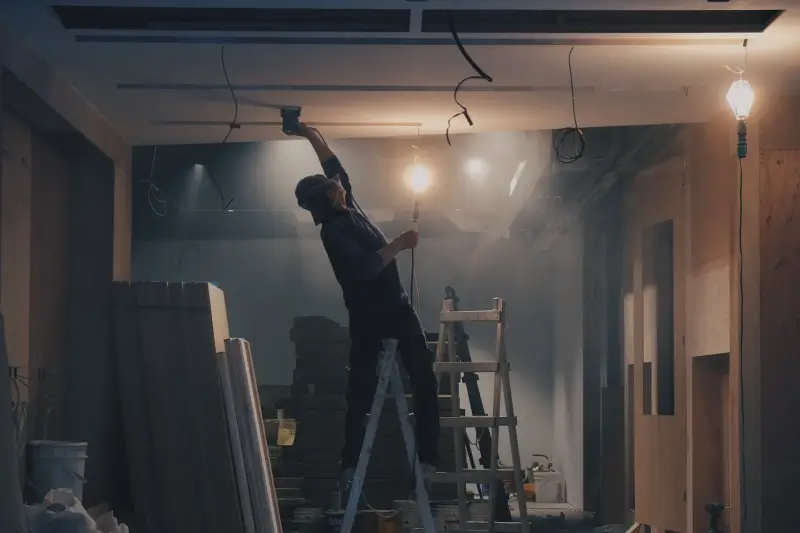
Reinstatement works refer to the process of restoring a property back to its original state before any renovation or modification works were done. This is a common requirement in Singapore for commercial, retail and industrial properties at the end of a lease or rental term. Proper reinstatement works are critical to preserve the value of the property, comply with regulations, and allow the space to be easily rented out again. This definitive guide provides an overview of reinstatement works in Singapore.
1. What is Reinstatement and Why is it Needed?
2. Types of Reinstatement Works
3. Scope of Reinstatement Works
4. Cost of Reinstatement in Singapore
5. Timeline for Reinstatement Works
6. Hiring Professional Reinstatement Contractors
7. Conclusion
Reinstatement, also known as restoration works, involves reverting a property back to its original condition when first rented. This includes dismantling and removing any additions or alterations done by the previous tenant.
Reinstatement works are stipulated in tenancy agreements in Singapore across commercial and residential properties. This contractual obligation mandates tenants to reinstate the property upon expiry of the lease.
Reinstatement is necessary for several reasons:
Ultimately, reinstatement works aim to restore the property back to a neutral condition for smooth handover between landlord and tenant. This expectation is clearly set out in tenancy contracts.
Reinstatement projects can vary greatly depending on the type of property:
Office reinstatement involves removing all temporary fittings like partitions, cubicles, workstations, power points, data ports, and signage installed by the tenant. Doors, entrances, lighting, ceiling works, and electrical wiring may need to be relocated back to original positions.
Office reinstatement is extremely common in Singapore, with tight deadlines as companies often have to vacate and handover office space quickly due to relocations or consolidation.
More extensive hacking and reinstatement works are needed for retail spaces like malls, shophouses, and restaurants given frequent interior revamps by retailers and F&B establishments. This includes dismantling any built-in fixtures, display shelves, counters, or furniture installed.
Repainting to a neutral theme is also commonly required by landlords to remove custom branding and style by the exiting tenant. Walls are hacked and partitions removed. For restaurants, kitchen equipment, exhaust hoods, ventilation and plumbing systems may need to be dismantled as well.
Depending on agreements, retail reinstatement works may need to be done after operating hours to minimize business disruption.
Industrial reinstatement restores factory units, warehouses, and storage facilities back to their original layout and condition. This is the most complex reinstatement work.
Extensive removal of semi-permanent fixtures like racking and storage systems, conveyor systems, machinery, equipment, and related cabling is required. Dismantling of specialized facilities like clean rooms, exhaust systems, power access, and material handling systems may also be necessary.
Decontamination of surfaces may be required depending on the type of industrial use. Facilities also need to be restored back to functional layouts if production flows were altered. The reinstatement contractor must demonstrate extensive experience with industrial facilities.
The scope of reinstatement can be complex, especially if the previous tenant renovated the space extensively. Here are some common scopes:
Demolition Works
Relocation Works
MEP Works
Interior Finishing
Furnishing
Waste Disposal
Depending on the handover terms, the outgoing tenant may also need to restore M&E systems back to safe operating standards after wear and tear.
Reinstatement costs vary widely, ranging from $3 to $24 per sq ft on average depending on the size and scope complexity.
Here are typical cost ranges:
Office Reinstatement
Retail Reinstatement
Industrial Reinstatement
Reinstatement for restaurants and warehouses on the higher end due to more extensive works required. Many variables affect costs like location, finishes, and equipment. Obtain quotations from professional reinstatement works contractors early for proper budgeting.
Most reinstatement projects take 4 to 8 weeks to complete. However, timelines vary greatly case by case depending on factors like:
For smooth progress, engage an experienced contractor 6 months prior to the lease expiry. This provides sufficient time for several key stages:
Planning (6 – 8 weeks)
Demolition (1 – 2 weeks)
Restoration (3 – 4 weeks)
Handover
Rushing reinstatement works can compromise quality and lead to delays in handing over the property on time.
With extensive technical skills needed, it is highly advisable to hire professional reinstatement contractors in Singapore.
Here are key factors to look for:
Experienced and Specialized
Proven Track Record
Reliable and Insured
Professionalism
An established contractor like Hacking Singapore is an ideal choice. With many years of experience specializing in office, retail, and restaurant reinstatement projects, our reliable BCA-certified teams can ensure quality work is delivered on time.
In summary, reinstatement works involve restoring properties to their original state, a contractual must in Singapore. Hiring reliable reinstatement specialists like Hacking Singapore provides peace of mind that handover will be hassle-free for both landlord and tenant. Their expertise ensures reinstatement works are done properly, on time, and up to BCA standards.